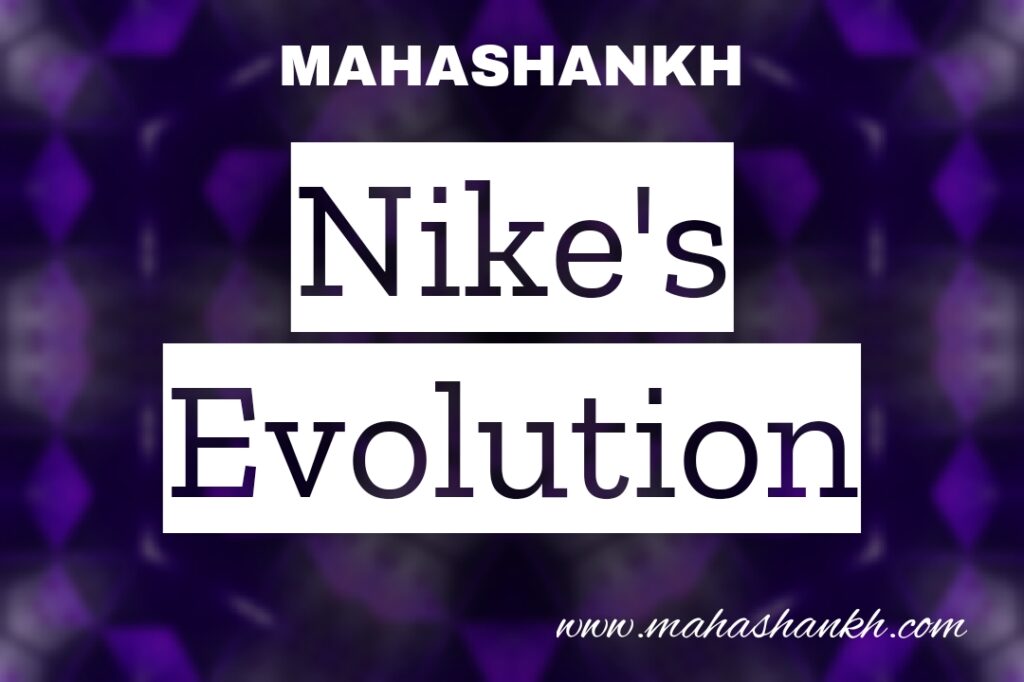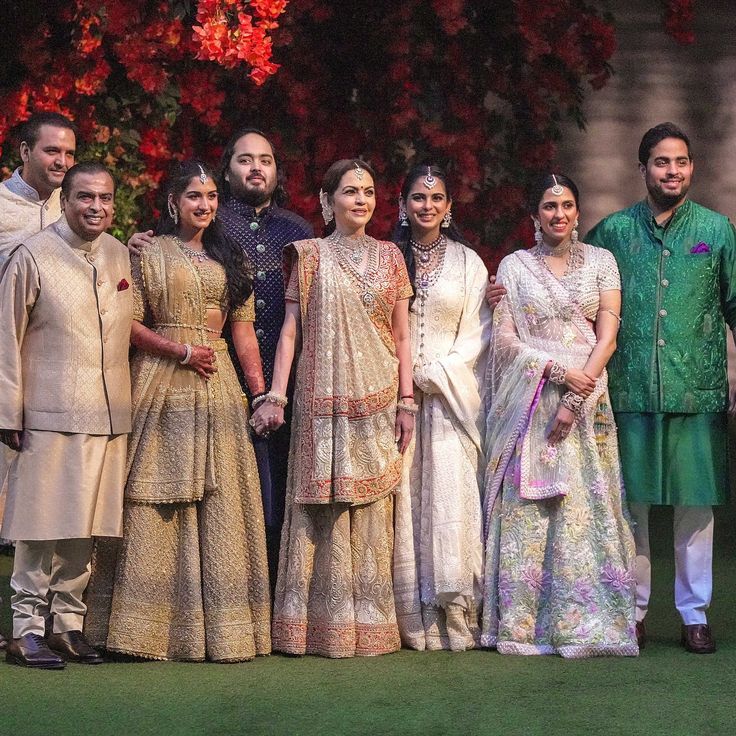The Current State of Nike: A Titan Facing Challenges
Nike, the iconic sportswear giant, has been a dominant force in the athletic apparel industry for decades. However, like any major player, it faces its own set of challenges and opportunities in today’s dynamic market.
Financial Performance:
- Positive Growth: Despite a turbulent economic climate, Nike recently reported a 10% year-over-year revenue increase to $51.2 billion for fiscal year 2023. This growth was driven by double-digit increases in both direct-to-consumer sales and wholesale partnerships.
- Shifting Landscape: While the overall picture is positive, some regions, like the North American market, experienced a slight decline. This highlights the need for Nike to adapt its strategies to cater to diverse consumer preferences and market conditions.
- Strong Direct-to-Consumer Channel: The company’s direct-to-consumer sales, encompassing online and owned stores, grew by 14%, demonstrating its successful efforts in building a strong omnichannel presence.
Market Challenges:
- Increased Competition: The sportswear market is becoming increasingly competitive, with established players like Adidas and Puma constantly innovating and new entrants emerging. Nike needs to maintain its edge through cutting-edge technology, effective marketing, and a focus on sustainability.
- Supply Chain Disruptions: Global supply chain disruptions continue to pose a challenge for Nike, impacting production timelines and potentially leading to increased costs and product shortages.
- Geopolitical Uncertainties: The ongoing war in Ukraine and rising inflation in various regions present economic uncertainties that could affect consumer spending and Nike’s global operations.
Opportunities for Growth:
- Digitalization: Nike has been actively investing in digital technologies, such as its SNKRS app and personalized shopping experiences. This focus on digitalization is crucial for attracting tech-savvy consumers and staying ahead of the curve.
- Sustainability: Consumers are increasingly concerned about the environmental impact of their clothing choices. Nike has taken steps towards sustainability by using recycled materials and reducing its carbon footprint, making it a more appealing choice for environmentally conscious consumers.
- Emerging Markets: Nike has a significant growth opportunity in emerging markets like China and India, where the demand for sportswear is expected to rise rapidly. Tailoring its products and marketing strategies to these specific markets will be crucial for success.
Overall, Nike remains a formidable force in the sportswear industry, but it must navigate the current challenges and capitalize on emerging opportunities to maintain its leadership position.
Additional Points to Consider:
- Celebrity Endorsements: Nike has a long history of using celebrity endorsements to promote its products. While this strategy has been successful in the past, it is important for Nike to ensure that its partnerships align with its brand values and resonate with modern consumers.
- Social Responsibility: Consumers are increasingly holding brands accountable for their social and environmental impact. Nike needs to continue its efforts in areas like ethical labor practices and community engagement to maintain a positive brand image.
- Technological Innovation: Technological advancements are constantly changing the way consumers shop and interact with brands. Nike needs to invest in new technologies to enhance the customer experience and remain at the forefront of innovation.
Table of Contents
The Evolution of Nike: A Journey from Blue Ribbon Sports to Global Sportswear Dominance

The history of Nike is a compelling narrative of innovation, athlete partnerships, and a relentless pursuit of excellence. Founded on the campus of the University of Oregon in January 1964 as Blue Ribbon Sports (BRS) by Bill Bowerman and Phil Knight, the company that would become Nike has undergone a transformative journey over the decades.
1960s: The Genesis of Blue Ribbon Sports
Blue Ribbon Sports began as a distributor for the Japanese shoemaker Onitsuka Tiger, importing their running shoes to the United States. Knight, a former track athlete, and Bowerman, his coach at the University of Oregon, shared a vision of improving athletic performance through innovative footwear.
1971: The Birth of Nike and the Swoosh
In 1971, the partnership with Onitsuka Tiger came to an end, leading to the creation of the brand we now know as Nike. The name “Nike” is derived from the Greek winged goddess of victory, symbolizing the brand’s aspiration for triumph and success. The iconic Swoosh logo, designed by graphic design student Carolyn Davidson, made its debut around this time, becoming a symbol of speed, movement, and grace.
1972: The First Nike Shoes and the Waffle Sole Innovation
The first set of Nike shoes, featuring the iconic Swoosh, was introduced in 1972. The groundbreaking innovation of the waffle sole, designed by Bowerman, provided superior traction and marked the beginning of Nike’s commitment to advancing athletic performance through cutting-edge technology.
1980s: Air Jordans and the Rise of Athlete Endorsements
The 1980s witnessed the signing of basketball legend Michael Jordan, a move that would revolutionize sports marketing. The Air Jordan series, introduced in 1985, not only elevated Jordan’s status to global icon but also transformed athletic footwear into a cultural phenomenon. Nike became synonymous with athlete endorsements, setting a trend that would define the industry.
1990s: Just Do It Campaign and Global Expansion
The “Just Do It” campaign, launched in 1988, became a rallying cry for athletes and enthusiasts alike, emphasizing the power of determination and the pursuit of one’s goals. The 1990s saw Nike’s global expansion, with the company becoming a ubiquitous presence in international markets, solidifying its position as a leader in sportswear.
2000s: Technological Innovations and Sustainability Initiatives
Nike continued to push the boundaries of technology in the 2000s. The introduction of technologies like Nike Shox and Nike Free showcased the brand’s commitment to performance innovation. Additionally, Nike embraced sustainability with initiatives like the Considered Design, emphasizing environmentally friendly practices and materials.
2010s: Digital Transformation and Cultural Impact
The rise of digital platforms and social media in the 2010s reshaped Nike’s approach to marketing. The brand’s engagement with cultural movements and social issues, exemplified by campaigns like “Dream Crazy” featuring Colin Kaepernick, demonstrated Nike’s willingness to take a stand and connect with a socially conscious consumer base.
2020s: Navigating Challenges and Continued Innovation
As of the early 2020s, Nike faced challenges such as the impact of the COVID-19 pandemic on retail and supply chains. However, the brand continued to innovate with releases like the Space Hippie collection, showcasing a commitment to sustainability. Nike remains a global force in sportswear, continually evolving to meet the demands of an ever-changing market.
Legacy: A Cultural Icon and Global Symbol of Excellence
Nike’s history is a testament to its ability to evolve, adapt, and shape the narrative of sportswear. From its humble beginnings as Blue Ribbon Sports to its current status as a global cultural icon, Nike’s journey reflects a legacy of innovation, athlete partnerships, and a commitment to the ethos of victory encapsulated in its iconic Swoosh.
Nike’s Evolution: From Track to Lifestyle Icon
In the realm of athletic footwear and sportswear, few brands command as much respect and recognition as Nike. From its humble beginnings as a distributor of Japanese sneakers to its current status as a global cultural phenomenon, Nike’s journey has been nothing short of remarkable. This article delves into the fascinating evolution of Nike, tracing its roots on the track to its iconic status as a lifestyle brand.
The Early Strides: A Trackside Beginning
Nike, originally known as Blue Ribbon Sports, was founded by Bill Bowerman and Phil Knight in 1964. Initially serving as a distributor for the Japanese shoemaker Onitsuka Tiger, the company focused on providing high-quality athletic footwear for runners. Bowerman, a track and field coach, brought his expertise to the design process, emphasizing performance and functionality.
The breakthrough came in 1971 when the iconic “Swoosh” logo was introduced, symbolizing the speed, movement, and power associated with athletic prowess. This marked the beginning of Nike’s ascent from a running shoe company to a symbol of athletic excellence.
Just Do It: The Birth of a Cultural Mantra
The 1980s saw Nike expanding its product line beyond running shoes. With the introduction of the “Just Do It” slogan in 1988, Nike aimed to inspire a mindset of determination and excellence. This marked a pivotal moment as Nike transitioned from being solely associated with athletics to becoming a lifestyle brand that embodied the spirit of achievement.
Athlete Endorsements: Fueling the Fire
Nike’s strategic partnerships with legendary athletes played a crucial role in its evolution. The signing of basketball superstar Michael Jordan in the mid-1980s resulted in the creation of the iconic Air Jordan line, transcending the basketball court to become a cultural phenomenon. Nike continued to collaborate with athletes across various sports, solidifying its status as a brand synonymous with athletic greatness.
From Tracks to Streets: Embracing the Urban Landscape
The 1990s marked a significant shift for Nike as it actively embraced street culture. The Air Max series and other innovative designs not only pushed the boundaries of athletic performance but also became style statements. Nike sneakers became a symbol of urban coolness, worn by enthusiasts not just for sports but as a fashion statement.
Cultural Impact: Nike Beyond Sport
Nike’s influence expanded beyond the realms of sports and fashion. The brand played a pivotal role in various social and cultural movements, addressing issues such as diversity, equality, and environmental sustainability. Nike’s campaigns, such as the “Dream Crazy” featuring Colin Kaepernick, demonstrated a commitment to social causes, resonating with a broader audience.
Sustainability and Innovation: The Modern Era
In recent years, Nike has embraced sustainability and technological innovation. The Flyknit technology revolutionized shoe manufacturing by reducing waste, while the “Move to Zero” initiative reflects Nike’s commitment to environmental responsibility. These endeavors showcase a brand that continues to evolve with the times, addressing contemporary concerns and setting new industry standards.
HISTORY OF NIKE
The history of the Nike brand is a fascinating journey that began in the 1960s. Here’s an overview of key milestones in the development of Nike:
- Blue Ribbon Sports (BRS):
- Nike was originally founded as Blue Ribbon Sports by Bill Bowerman, a track and field coach, and Phil Knight, a middle-distance runner. They started the company in January 1964 as a distributor for the Japanese shoemaker Onitsuka Tiger.
- The Swoosh is Born:
- In 1971, the founders decided to rebrand the company, and Carolyn Davidson, a graphic design student, created the iconic Nike Swoosh logo. The Swoosh represented movement, speed, and the wing of the Greek goddess Nike.
- Nike’s First Shoe:
- The first shoe to feature the Nike brand name was the “Nike,” named after the Greek goddess of victory. It was introduced in 1971.
- Waffle Trainer:
- In 1972, Nike introduced the “Waffle Trainer,” designed by Bill Bowerman. It featured a sole with a waffle-like pattern, providing better traction for runners.
- Nike Goes Public:
- Nike officially became Nike, Inc. in 1971, and the company went public in December 1980. The initial public offering helped fund expansion and marketing efforts.
- Air Jordans:
- In 1984, Nike signed basketball rookie Michael Jordan to an endorsement deal. The release of the Air Jordan I in 1985 revolutionized the athletic shoe industry and marked the beginning of the highly successful Air Jordan line.
- “Just Do It” Campaign:
- In 1988, Nike introduced its famous “Just Do It” slogan, accompanied by a memorable advertising campaign. The campaign emphasized the spirit of determination and motivation.
- Innovations and Technologies:
- Nike has been at the forefront of technological innovations in sportswear. The introduction of technologies like Air Max cushioning, Nike Shox, and Flyknit has reinforced the brand’s commitment to performance and comfort.
- Global Expansion:
- Nike expanded its global presence aggressively throughout the 1980s and 1990s. The acquisition of brands like Converse and Hurley helped diversify its product offerings.
- Nike in the Digital Age:
- Nike embraced digital technology, introducing products like the Nike+ running sensor and partnering with tech companies for smart athletic gear.
- Sustainability Initiatives:
- In recent years, Nike has focused on sustainability and ethical practices. Initiatives like the “Reuse-A-Shoe” program and efforts to reduce environmental impact showcase the company’s commitment to social responsibility.
- Collaborations and Limited Editions:
- Nike has collaborated with various designers, athletes, and celebrities, producing limited-edition releases that have become highly sought after by sneaker enthusiasts.
Today, Nike stands as one of the world’s most recognizable and influential sportswear brands, with a rich history of innovation, marketing prowess, and cultural impact.
PRODUCTS OF NIKE
Nike offers a wide range of products across various categories, catering to athletes and individuals with an active lifestyle. Here are some of the key product categories and examples of products within each:
- Footwear:
- Running Shoes (e.g., Nike Air Zoom Pegasus, Nike Free RN)
- Basketball Shoes (e.g., Nike LeBron, Nike Kyrie)
- Soccer Cleats (e.g., Nike Mercurial, Nike Tiempo)
- Lifestyle Sneakers (e.g., Nike Air Force 1, Nike Air Max)
- Training Shoes (e.g., Nike Free Trainer, Nike Metcon)
- Apparel:
- Performance Running Apparel (e.g., Dri-FIT shirts, shorts, and leggings)
- Basketball Jerseys and Shorts (e.g., NBA jerseys)
- Soccer Kits (e.g., National team jerseys, club jerseys)
- Activewear and Sportswear (e.g., hoodies, leggings, jackets)
- Golf Apparel (e.g., golf polos, pants, and outerwear)
- Accessories:
- Athletic Socks (e.g., Nike Elite socks)
- Hats and Caps (e.g., Nike Heritage86, Nike AeroBill)
- Bags and Backpacks (e.g., Nike Brasilia Backpack)
- Gloves (e.g., Nike Vapor Jet football gloves)
- Headbands and Wristbands
- Equipment:
- Soccer Balls
- Basketballs
- Training Equipment (e.g., cones, resistance bands)
- Golf Clubs and Accessories
- Running Gear (e.g., hydration belts, phone holders)
- Athlete Collections and Collaborations:
- Nike collaborates with athletes and celebrities to create signature collections. Examples include the Air Jordan line, LeBron James’ signature collection, and collaborations with artists and designers.
- Technology and Gadgets:
- Nike has ventured into technology-driven products, including:
- Nike Adapt self-lacing shoes
- Nike Training Club app and Nike Run Club app
- Nike FuelBand (fitness tracker, though it’s now discontinued)
- Special Collections:
- Nike occasionally releases special collections, often in collaboration with designers, brands, or events. Examples include:
- Nike BETRUE Collection (supporting the LGBTQ+ community)
- Nike Doernbecher Freestyle (designed by patients at the OHSU Doernbecher Children’s Hospital)
- Golf Equipment:
- Golf Clubs
- Golf Balls
- Golf Shoes and Apparel
- Converse:
- As a subsidiary of Nike, Converse offers a range of iconic sneakers such as Chuck Taylor All Stars and One Stars.
- Nike By You (Customization):
- Nike allows customers to customize certain products, including sneakers (Nike By You), allowing them to choose colors, materials, and add personal touches.
These categories showcase the diversity of Nike’s product offerings, emphasizing its commitment to performance, style, and innovation across a wide range of sports and activities.
Innovation and Inspiration: Unveiling the Nike Legacy

When it comes to the intersection of innovation, inspiration, and sportswear, one brand stands head and shoulders above the rest – Nike. Born from the vision of co-founders Bill Bowerman and Phil Knight, Nike has evolved into a global powerhouse, leaving an indelible mark on the worlds of athletics, fashion, and culture. This article explores the intricate tapestry of innovation and inspiration that weaves through the rich fabric of the Nike legacy.
The Genesis of Innovation: Nike’s Pioneering Spirit
From its inception, Nike has been synonymous with pushing the boundaries of what’s possible. Bill Bowerman, a track and field coach, brought a coach’s perspective to the design process, revolutionizing athletic footwear. In 1971, the introduction of the iconic Swoosh logo heralded not only a visual symbol but a commitment to speed, movement, and excellence.
Airborne Revolution: The Air Max Phenomenon
In 1987, Nike introduced a groundbreaking technology that would change the sneaker game forever – the Air Max cushioning system. Visible air pockets provided unparalleled comfort and support, setting the stage for a sneaker revolution. The Air Max series became a cultural icon, not just for runners but for those seeking both performance and style.
Just Do It: Inspiring a Global Mindset
The “Just Do It” mantra, unveiled in 1988, transcended marketing to become a cultural rallying cry. Encapsulating the essence of determination, resilience, and the pursuit of greatness, these three words transformed Nike from a mere sportswear company into a global lifestyle brand. “Just Do It” wasn’t just a slogan; it was an ethos that resonated with individuals from all walks of life.
Athlete Collaborations: Champions of Innovation
Nike’s collaboration with athletes has been a driving force behind its innovative products. The Air Jordan line, born from the partnership with basketball legend Michael Jordan, became a cultural phenomenon. This trend continued with collaborations featuring sports icons like LeBron James, Serena Williams, and Cristiano Ronaldo. Nike’s commitment to providing athletes with cutting-edge gear has elevated both performance and style in the world of sports.
Fueling Creativity: Nike’s Design Philosophy
Innovation is deeply ingrained in Nike’s design philosophy. The company has consistently embraced new materials, technologies, and manufacturing processes. The Flyknit technology, introduced in 2012, exemplifies Nike’s commitment to reducing waste and improving performance. This dedication to innovation ensures that Nike products not only meet but exceed the evolving needs of athletes and consumers.
Beyond the Track: Nike’s Cultural Impact
Nike’s influence extends far beyond sports arenas. The brand has consistently engaged with cultural moments and movements, reflecting a keen understanding of societal shifts. From addressing social issues in ad campaigns to celebrating diversity and inclusivity, Nike has positioned itself as a brand that stands for more than just athletic excellence.
Sustainability: A Step Towards a Better Future
In recent years, Nike has taken significant strides toward sustainability. The “Move to Zero” initiative outlines the company’s commitment to reducing its environmental footprint. By incorporating recycled materials, reducing waste, and exploring eco-friendly practices, Nike is not only innovating in product design but also leading the way toward a more sustainable future for the entire industry.
Behind the Swoosh: Exploring the Brand Story of Nike

In the bustling world of sportswear and athletic apparel, one iconic emblem stands out—a simple, yet powerful, Swoosh. This symbol is the hallmark of Nike, a brand that has not only redefined the athletic industry but has also embedded itself in the cultural fabric of society. This article peels back the layers to explore the captivating narrative behind the Swoosh and unravel the brand story of Nike.
The Birth of Blue Ribbon Sports: Humble Origins
Nike’s story begins in 1964 when Bill Bowerman, a track and field coach, and Phil Knight, a business student, came together to create Blue Ribbon Sports (BRS). Operating as a distributor for the Japanese shoemaker Onitsuka Tiger, their mission was to provide high-quality athletic footwear to a market that was just beginning to embrace the fitness revolution.
The Swoosh Emerges: Designing the Icon
In 1971, graphic design student Carolyn Davidson crafted a logo for BRS. The now-famous Swoosh was born, symbolizing movement, speed, and the wing of the Greek goddess Nike. Despite initial reservations about the simplicity of the design, the Swoosh became an integral part of the brand’s identity, evolving into one of the most recognizable logos in the world.
Nike is Born: A Brand with a Purpose
In 1971, the company officially became Nike, named after the Greek goddess of victory. The Swoosh, paired with the brand’s compelling tagline, “Just Do It,” encapsulated the spirit of determination and perseverance. Nike wasn’t just selling athletic shoes; it was selling a mindset—an attitude that encouraged individuals to push their limits and strive for excellence.
Air Jordans and Endorsements: Shaping Culture and Style
The 1980s saw Nike redefine the concept of athlete endorsements. The signing of basketball superstar Michael Jordan resulted in the creation of the Air Jordan line, forever changing the dynamics of sports marketing. Beyond performance, Nike was now synonymous with style and urban coolness. The Swoosh wasn’t just a logo; it was a symbol of aspiration and cultural significance.
Challenges and Triumphs: Navigating the Waters
Nike’s journey hasn’t been without challenges. From labor controversies to criticisms of working conditions in overseas factories, the brand faced scrutiny. However, Nike responded by implementing changes, embracing transparency, and committing to ethical practices. These challenges, though tumultuous, served as catalysts for the brand’s growth and development.
Innovation at the Core: Technological Breakthroughs
A constant thread in the Nike narrative is innovation. Whether it’s the introduction of Air technology in the 1980s or the more recent advancements in sustainable materials and manufacturing, Nike has consistently pushed the boundaries of what’s possible. Technological breakthroughs not only enhanced athletic performance but also solidified Nike’s reputation as a pioneering force in the industry.
Global Impact: Beyond Sportswear
As Nike expanded globally, it transcended its role as a sportswear company. The brand actively engaged with cultural moments, addressing social issues through impactful ad campaigns and supporting athletes as they used their platforms for advocacy. Nike became a symbol of empowerment, standing for diversity, equality, and social justice.
Sustainability: A Commitment to the Future
In recent years, Nike has taken significant steps towards sustainability. The “Move to Zero” initiative outlines the company’s dedication to reducing its environmental impact. Through the use of recycled materials, innovative design processes, and a commitment to circular practices, Nike is not only shaping the future of sportswear but also leading the way toward a more sustainable industry.
Breaking Barriers: Nike’s Impact on Sports and Culture
In the dynamic intersection of sports and culture, one name resonates louder than most – Nike. Beyond being a sportswear giant, Nike has etched its mark as a cultural force, breaking barriers and reshaping the landscape of both athletics and societal norms. This article delves into the profound impact that Nike has had on pushing boundaries, inspiring change, and leaving an indelible imprint on the world of sports and culture.
Pioneering Endorsements: Beyond the Game
Nike’s foray into athlete endorsements has been nothing short of revolutionary. In the 1980s, the signing of basketball legend Michael Jordan marked a turning point. The Air Jordan line not only became synonymous with on-court excellence but also transcended the court to influence streetwear and urban culture. Nike elevated athletes to the status of cultural icons, demonstrating the transformative power of sportswear beyond its functional purpose.
Diversity and Inclusion: A Cultural Mandate
Nike has actively championed diversity and inclusion, using its platform to amplify voices and celebrate the richness of human experience. Iconic ad campaigns like “If You Let Me Play” and “Dream Crazier” highlighted the struggles and triumphs of athletes, irrespective of gender or background. Nike’s commitment to diversity extends beyond marketing; it is embedded in the brand’s DNA, fostering a culture of empowerment and acceptance.
Social Activism: Beyond the Swoosh
Nike has shown a willingness to engage in social issues, sometimes stepping into the contentious arena of politics. The “Dream Crazy” campaign featuring Colin Kaepernick sparked conversations about racial injustice and sparked a broader dialogue about the role of corporations in activism. Nike’s willingness to take a stand has positioned the brand as a catalyst for change, challenging the status quo and inspiring others to do the same.
Innovations in Performance: Redefining Limits
Nike’s impact on sports extends to the realm of performance innovation. The introduction of groundbreaking technologies like Air Max cushioning and Flyknit material has not only elevated athletic performance but has also influenced the aesthetics of sports fashion. Nike’s commitment to pushing the limits of what is possible in sportswear has inspired athletes to reach new heights and has set industry standards for innovation.
Cultural Collaborations: Beyond the Stadiums
Nike has consistently sought collaboration beyond the world of sports, partnering with artists, musicians, and designers. Collaborations with fashion icons like Virgil Abloh and cultural influencers like Travis Scott have blurred the lines between sportswear and high fashion, further solidifying Nike’s position as a cultural tastemaker.
Sustainable Strides: A Green Revolution
In response to the growing environmental crisis, Nike has taken strides toward sustainability with initiatives like “Move to Zero.” The brand acknowledges its responsibility in minimizing its environmental impact, embracing eco-friendly practices and materials. Nike’s commitment to sustainability reflects an awareness of the global challenges and a dedication to contributing positively to the planet.
Global Community Engagement: The Nike Ecosystem
Nike has cultivated a global community that extends beyond consumers of sportswear. The brand hosts events, supports grassroots initiatives, and collaborates with communities worldwide. This engagement goes beyond sales figures; it reflects Nike’s commitment to being an active participant in the lives of those who wear the Swoosh.
Sustainable Strides: Nike’s Commitment to Environmental Responsibility

In an era where environmental consciousness is paramount, global corporations are under increasing scrutiny to align their practices with sustainable values. Nike, a name synonymous with innovation and athleticism, has not only recognized this imperative but has taken substantial steps to make a positive impact on the environment. This article delves into Nike’s commitment to environmental responsibility, exploring the brand’s sustainable initiatives and the strides it is making toward a greener future.
The “Move to Zero” Initiative: A Holistic Approach
Central to Nike’s commitment to sustainability is the “Move to Zero” initiative, an ambitious roadmap unveiled by the company. The initiative outlines Nike’s goal to achieve zero carbon and zero waste throughout its supply chain and product life cycle. This comprehensive approach encompasses everything from sustainable materials and manufacturing to energy use and waste reduction.
Recycled Materials: Transforming Waste into Innovation
Nike recognizes the importance of repurposing materials to minimize its ecological footprint. The brand has incorporated recycled polyester, rubber, and even discarded plastic bottles into its products. By giving a second life to materials that would otherwise contribute to environmental degradation, Nike not only reduces waste but also sets an industry standard for responsible sourcing.
Innovative Design: Flyknit and Sustainable Style
Nike’s commitment to sustainability goes hand in hand with innovative design. The introduction of Flyknit technology revolutionized the manufacturing process by significantly reducing waste. This eco-friendly approach not only benefits the environment but also results in lightweight, high-performance products that resonate with environmentally conscious consumers.
Renewable Energy: Powering Progress
Nike is making strides in transitioning to renewable energy sources to power its operations. The brand has set a goal to achieve 100% renewable energy in its owned or operated facilities, recognizing the crucial role clean energy plays in mitigating the environmental impact of manufacturing and distribution processes.
Water Stewardship: Navigating the Blue Challenge
Water is a precious resource, and Nike acknowledges its responsibility to manage its usage responsibly. The company has committed to reducing its water footprint in manufacturing, focusing on sustainable practices to conserve water resources. Nike’s efforts in water stewardship reflect a commitment to environmental responsibility in every facet of its operations.
Environmental Transparency: Openness and Accountability
Nike understands that transparency is a key component of responsible business practices. The company has made strides in disclosing its environmental impact, providing consumers and stakeholders with insights into its sustainability journey. By being open about challenges and progress, Nike encourages a culture of accountability and collective responsibility for a sustainable future.
Community Engagement: Empowering Change Beyond the Brand
Nike’s commitment to environmental responsibility extends beyond its corporate boundaries. The brand actively engages with communities, supporting grassroots initiatives and environmental projects. By fostering a sense of shared responsibility, Nike contributes not only to a greener planet but also to a broader movement for sustainable practices.
The Road Ahead: Continual Progress and Innovation
While Nike has made significant strides in its commitment to environmental responsibility, the brand acknowledges that the journey is ongoing. The challenges of climate change and resource depletion demand constant innovation and adaptation. Nike’s commitment to continual progress and a willingness to embrace emerging technologies position it as a leader in the evolving landscape of sustainable business practices.
The Art of Endorsements: Athletes and Celebrities in the Nike Spotlight

In the world of sports and fashion, the symbiotic relationship between athletes, celebrities, and prominent brands has become an art form in its own right. Nike, a global behemoth in sportswear, has mastered this art of endorsements, crafting iconic partnerships that transcend mere advertising. This article explores the strategic brilliance behind Nike’s collaborations with athletes and celebrities, shedding light on how these partnerships have elevated both the brand and the individuals in the spotlight.
A Legacy of Athletic Excellence: Nike’s Early Embrace of Endorsements
Nike’s journey into the world of athlete endorsements began in the 1970s. The signing of running sensation Steve Prefontaine marked the inception of a trend that would define the brand’s marketing strategy. Prefontaine’s endorsement not only showcased Nike’s commitment to performance but also signaled the brand’s early recognition of the marketing power inherent in associating with athletic excellence.
The Michael Jordan Effect: Redefining Sports Marketing
The 1980s witnessed a seismic shift in the landscape of sports endorsements with the signing of basketball legend Michael Jordan. The Air Jordan line, an iconic collaboration between Nike and Jordan, transcended the basketball court, becoming a cultural phenomenon. This partnership wasn’t just about athletic prowess; it was about creating a lifestyle brand that resonated with a global audience.
Beyond Athletics: Celebrities in the Swoosh Universe
As Nike’s influence expanded, so did its approach to endorsements. The brand began collaborating with celebrities beyond the realm of sports. Musicians, actors, and cultural influencers found themselves in the Nike spotlight. Collaborations with artists like Kanye West and Pharrell Williams showcased Nike’s ability to bridge the gap between sports and popular culture, blurring the lines between athletic performance and lifestyle.
The Rise of Influencer Culture: Nike and Social Media Stars
In the age of social media, Nike has adeptly embraced the influence of digital celebrities. From partnering with Instagram fitness gurus to collaborating with YouTube sensations, the brand has recognized the power of online platforms in shaping consumer perception. These collaborations not only showcase Nike products to a vast audience but also leverage the authenticity and relatability of social media influencers.
Empowering Women: Nike’s Commitment to Female Athletes
Nike has been at the forefront of championing female athletes, recognizing their prowess both on and off the field. Endorsements with athletes like Serena Williams, Simone Biles, and Megan Rapinoe highlight Nike’s commitment to breaking gender barriers. These partnerships are not just about showcasing athletic talent but also sending a powerful message of empowerment and equality.
Cultural Impact: Navigating Social Issues Through Endorsements
Nike has not shied away from using its endorsements to navigate societal issues. The “Dream Crazy” campaign featuring Colin Kaepernick sparked conversations about racial injustice and prompted a global dialogue on the role of brands in addressing social issues. Nike’s willingness to take a stand through its endorsements reflects a brand that understands its influence and is unafraid to wield it responsibly.
Collaborations as Artistic Expression: Designers in the Mix
Nike has elevated endorsements to an art form by collaborating with renowned designers. Partnerships with names like Virgil Abloh and Sacai have produced limited-edition collections that blend high fashion with athletic performance. These collaborations transcend mere product endorsements; they are artistic expressions that redefine the intersection of sportswear and high fashion.
The Global Impact: From Local Heroes to International Icons
Nike’s endorsements aren’t limited to American athletes; the brand has a global perspective. From Cristiano Ronaldo in Portugal to Naomi Osaka in Japan, Nike has strategically aligned itself with international stars, creating a global network of athletes and celebrities that resonate with diverse audiences around the world.
Nike’s Game-Changing Technologies: Revolutionizing Athletic Performance
In the dynamic world of athletic performance, where milliseconds and millimeters can make the difference between victory and defeat, Nike stands as a pioneer. Beyond its iconic swoosh and stylish designs, the brand has consistently pushed the boundaries of innovation, introducing game-changing technologies that have revolutionized the way athletes perform. This article explores the cutting-edge technologies that have propelled Nike to the forefront of athletic advancement.
Air Max: A Revolutionary Cushioning Experience
In 1987, Nike introduced a breakthrough in footwear technology that would forever alter the landscape of athletic shoes—the Air Max cushioning system. Designed by Tinker Hatfield, the visible air pockets in the soles provided unprecedented cushioning and support. This not only enhanced comfort but also significantly improved performance, making Air Max a staple in both professional and recreational sports.
Flyknit: Lightweight Precision for Performance
The introduction of Flyknit technology in 2012 marked another paradigm shift in athletic footwear. Engineered to be lightweight, breathable, and formfitting, Flyknit redefined the possibilities of material design. The technology not only reduced waste in the manufacturing process but also offered athletes a snug and flexible fit, allowing for greater agility and comfort during competition.
Nike React: Responsive Cushioning for Energy Return
Addressing the need for both support and energy return, Nike React foam technology made its debut in 2017. Known for its responsiveness and durability, React foam provides athletes with a cushioning system that absorbs impact and swiftly returns energy, contributing to enhanced performance and reduced fatigue. This technology has found applications in running shoes, basketball sneakers, and more.
Nike Adapt: The Future of Personalized Fit
In the realm of performance, adaptability is key. Nike Adapt technology, introduced in 2019, takes customization to a new level. With self-lacing systems and personalized fit adjustments via a mobile app, Nike Adapt ensures that athletes can fine-tune their footwear for optimal comfort and performance, adapting to the unique needs of each individual.
Zoom Air: Targeted Responsiveness for Speed
Zoom Air technology, introduced in the late 1990s, focuses on providing targeted responsiveness for athletes requiring speed and agility. This lightweight and low-profile cushioning system is strategically placed in key areas of the shoe, delivering a heightened sense of court feel for basketball players, responsiveness for runners, and agility for athletes across various disciplines.
Nike Vaporfly: Breaking Marathon Records
Nike’s commitment to revolutionizing athletic performance extends to the realm of marathon running. The Nike Vaporfly series, equipped with innovative foam and carbon fiber plate technology, has been credited with contributing to record-breaking marathon times. Athletes like Eliud Kipchoge, who famously ran a marathon in under two hours, have showcased the transformative impact of this cutting-edge footwear.
Dri-FIT Technology: Keeping Athletes Cool and Dry
While much attention is given to footwear, Nike has also been a trailblazer in performance apparel. Dri-FIT technology, introduced in the late 1990s, is a moisture-wicking fabric that draws sweat away from the body, keeping athletes cool and dry during intense physical activity. This innovation has become a staple in athletic apparel, providing a crucial layer of comfort for athletes in various sports.
Nike Pro TurboSpeed: Aerodynamics for Speedsters
In the pursuit of speed, Nike Pro TurboSpeed technology takes inspiration from the study of golf ball aerodynamics. This technology, introduced in 2012, utilizes innovative materials and design patterns to reduce aerodynamic drag, allowing sprinters to cut through the air more efficiently and gain that extra edge in competition.
Next Evolution: The Confluence of Sustainability and Performance
As Nike continues to innovate, the next frontier involves the confluence of sustainability and performance. The brand’s commitment to reducing environmental impact is evident in initiatives like “Space Hippie,” where recycled materials are used to create performance footwear. Nike’s future technologies are not just about pushing the limits of athletic achievement but also doing so in an eco-friendly and sustainable manner.
From Air Jordans to Flyknits: A Journey Through Nike’s Iconic Shoe Designs

In the realm of athletic footwear, few brands have left an indelible mark quite like Nike. From the hallowed courts of basketball to the bustling streets of urban fashion, Nike’s journey has been marked by innovation, style, and an unwavering commitment to pushing the boundaries of design. This article embarks on a captivating journey through Nike’s iconic shoe designs, from the revolutionary Air Jordans to the cutting-edge Flyknits, showcasing the evolution of a brand that has become synonymous with athletic excellence and fashion-forward thinking.
Air Jordans: A Slam Dunk in Sneaker Culture
The Air Jordans, introduced in 1985, are more than just basketball shoes; they are cultural artifacts. Born out of the partnership between Nike and basketball legend Michael Jordan, these sneakers transformed the landscape of sports marketing and sneaker culture. The iconic Jumpman logo and the visible Air cushioning made Air Jordans a symbol of athletic prowess and streetwear coolness. The numbered series, starting with the Air Jordan I, has become a collector’s dream, each release adding a new chapter to the storied legacy of this groundbreaking line.
Air Max Series: The Visible Revolution
In 1987, Nike brought the revolutionary Air Max technology to the forefront with the release of the Air Max 1. Designed by Tinker Hatfield, the Air Max series made history by featuring a visible air unit in the sole, showcasing the cushioning technology that had previously been concealed. The Air Max not only revolutionized athletic performance but also sparked a sneaker revolution, creating a visual language that resonated with athletes and fashion enthusiasts alike.
Nike SB Dunk: Skateboarding Culture Meets Sneaker Style
In the early 2000s, Nike turned its attention to skateboarding, giving birth to the Nike SB Dunk. What began as a performance shoe for skateboarders quickly transcended its niche, becoming a sought-after fashion statement. The SB Dunk’s unique colorways and collaborations with artists and brands catapulted it into sneaker stardom. The SB Dunk remains a bridge between the worlds of sports and urban fashion, embodying the dynamic fusion of functionality and style.
Huarache: Minimalist Innovation for Maximum Comfort
In 1991, Nike introduced the Air Huarache, a shoe designed with a minimalist approach that focused on comfort and performance. The neoprene inner sleeve and exoskeletal upper not only provided a snug fit but also set a new standard for lightweight running shoes. The Huarache’s distinctive design has stood the test of time, becoming a symbol of innovation and streamlined aesthetics.
Flyknit Technology: Weaving the Future of Footwear
The launch of Flyknit technology in 2012 marked a pivotal moment in Nike’s design philosophy. Flyknit, a lightweight and formfitting material, revolutionized the manufacturing process by significantly reducing waste. The technology, born from the idea of creating a shoe that feels like a sock, offers a precise and adaptive fit, showcasing Nike’s commitment to both sustainability and performance.
React Foam: A Responsive Revolution
React foam, introduced in 2017, brought a new level of responsiveness to Nike’s lineup. Designed for durability and energy return, React foam quickly found its way into a variety of athletic shoes, from running to basketball. The cushioning technology not only enhanced comfort but also contributed to athletes achieving peak performance with reduced fatigue.
Space Hippie: The Eco-Friendly Sneaker Frontier
In response to the growing demand for sustainable practices in the fashion industry, Nike introduced the Space Hippie collection in 2020. Constructed from recycled materials, including discarded plastic bottles and manufacturing waste, Space Hippie represents a bold step toward eco-friendly design. The collection showcases Nike’s dedication to addressing environmental concerns while delivering stylish and performance-driven footwear.
Adapt Technology: A Futuristic Step into Customization
Building on the legacy of self-lacing technology from “Back to the Future,” Nike introduced Adapt technology in 2019. The self-lacing mechanism, controlled through a mobile app, allows users to customize the fit of their shoes with unprecedented precision. Adapt not only offers a glimpse into the future of personalized performance footwear but also reinforces Nike’s commitment to pushing the boundaries of innovation.
Nike’s Global Reach: How the Brand Became a Cultural Phenomenon

In the expansive landscape of sportswear, one brand stands above the rest, not just as a purveyor of athletic gear but as a global cultural phenomenon—Nike. The swoosh, synonymous with excellence and innovation, has become more than just a logo; it’s an emblem of aspiration, empowerment, and cultural influence. This article explores how Nike’s global reach has transformed the brand from a sportswear company to a cultural powerhouse that resonates with people across continents.
Roots in Athletics: A Foundation of Excellence
Nike’s journey to global prominence began with its unwavering commitment to athletic excellence. Founded in 1964 by Bill Bowerman and Phil Knight, the company initially focused on providing high-quality athletic footwear. Bowerman’s background as a track and field coach and Knight’s business acumen laid the foundation for a brand that prioritized performance and innovation.
Just Do It: A Universal Mantra
In 1988, Nike introduced the iconic “Just Do It” slogan, encapsulating a mindset that transcends borders. The three simple words became a global rallying cry for determination, perseverance, and the pursuit of greatness. “Just Do It” was more than a marketing tagline; it became a universal mantra that resonated with individuals from diverse cultures, backgrounds, and walks of life.
Athlete Collaborations: Icons Beyond Borders
Nike’s strategic partnerships with legendary athletes played a pivotal role in its global success. The signing of basketball superstar Michael Jordan in the mid-1980s resulted in the creation of the Air Jordan line, which transcended the basketball court to become a cultural phenomenon. Nike continued to collaborate with athletes from various sports, turning them into international icons and expanding its reach across continents.
Marketing Beyond Sport: Tapping into Cultural Movements
Nike’s marketing strategies have consistently gone beyond traditional sports narratives. The brand actively engages with cultural moments and movements, addressing issues such as diversity, equality, and social justice. Ad campaigns like “Dream Crazy” featuring Colin Kaepernick demonstrated Nike’s willingness to align with societal conversations, resonating with a global audience.
Streetwear and Fashion: From Tracks to Streets
Nike’s influence extends far beyond sports arenas. The brand made a deliberate move into streetwear, creating sneakers and apparel that not only deliver high performance but also make a bold style statement. The Air Max series and collaborations with designers and artists propelled Nike into the world of fashion, making it a staple in street culture across the globe.
Globalization of Sneaker Culture: A Unifying Thread
Sneaker culture, once rooted in niche communities, has become a global phenomenon, and Nike is at its forefront. Limited-edition releases, sneaker collaborations, and the cultural cachet associated with owning a pair of sought-after Nikes have united enthusiasts worldwide. The brand’s ability to tap into this global sneaker culture has contributed to its status as a cultural icon.
Adaptation to Local Tastes: Cultural Relevance in Every Market
Nike’s global success isn’t just a result of exporting American culture; it’s about adapting to and embracing local cultures. The brand has demonstrated a keen understanding of regional preferences, collaborating with local artists, athletes, and influencers to create products that resonate with diverse audiences. This localization strategy has allowed Nike to seamlessly integrate into the fabric of different societies.
Sports Sponsorships: Connecting with Global Events
Nike’s strategic sponsorships of major sporting events and teams around the world have further solidified its global presence. From the Olympics to the FIFA World Cup, Nike’s iconic swoosh is a familiar sight on athletes and teams from every corner of the globe. These sponsorships not only showcase the brand on a grand stage but also connect Nike with the passion and pride of sports fans worldwide.
Community Engagement: Grassroots Impact
Beyond the glitz of major events, Nike has made a concerted effort to engage with communities at the grassroots level. Initiatives like community sports programs, collaborations with local artists, and support for grassroots athletes have endeared the brand to people on a personal level, creating a sense of community that transcends borders.
Just Do It: Unraveling the Philosophy Behind Nike’s Motto

In the realm of iconic slogans, few resonate as powerfully as Nike’s timeless call to action: “Just Do It.” These three simple words have transcended their origin as a marketing tagline to become a mantra for determination, resilience, and the relentless pursuit of excellence. This article delves into the philosophy behind Nike’s “Just Do It,” exploring its origins, its impact on the brand, and the universal truths it encapsulates.
The Birth of a Slogan: Seizing the Moment in 1988
In 1988, as Nike faced increased competition and sought to reinvigorate its brand image, advertising executive Dan Wieden crafted a succinct and impactful slogan. “Just Do It” was born from the belief that everyone, regardless of background or ability, has the power to push beyond limits and achieve greatness. The phrase captured the essence of Nike’s mission, transforming it from a sportswear company into a global symbol of empowerment.
The Universality of Action: Breaking Barriers and Overcoming Doubt
“Just Do It” isn’t confined to the world of athletics; it’s a philosophy that transcends boundaries. At its core, the slogan encourages individuals to break free from self-imposed limitations and take decisive action. It’s a call to overcome doubt, fear, and procrastination—a reminder that the first step toward success is often the most crucial one.
Athlete Endorsements: Bringing the Mantra to Life
Nike’s strategic partnerships with iconic athletes have played a pivotal role in embodying the spirit of “Just Do It.” From Michael Jordan soaring through the air to Serena Williams dominating the tennis court, these athletes personify the ethos of pushing boundaries and achieving the seemingly impossible. Their stories serve as living proof that the “Just Do It” philosophy isn’t just rhetoric; it’s a lived experience.
Cultural Impact: From Advertising to Empowerment
Over the years, “Just Do It” has evolved from a marketing slogan to a cultural touchstone. The simplicity of the phrase makes it easily adaptable to a myriad of contexts, from sports to personal development. Nike’s advertising campaigns featuring the tagline have become cultural moments, resonating with audiences by tapping into the collective human desire for achievement and self-improvement.
Overcoming Adversity: Just Do It in the Face of Challenges
The resilience embedded in “Just Do It” shines brightest in moments of adversity. Nike has effectively used the slogan to address societal issues, embracing a stance of empowerment in the face of challenges. Notable campaigns, such as “Dream Crazy” featuring Colin Kaepernick, demonstrate Nike’s commitment to encouraging individuals to take a stand, pursue their dreams, and effect positive change.
Inspiration for Innovation: Catalyst for Progress
Beyond personal motivation, “Just Do It” has become a catalyst for innovation. Nike’s commitment to pushing the boundaries of design, technology, and sustainability reflects the belief that action and progress are intertwined. The ethos of “Just Do It” propels Nike to continually explore new frontiers in sportswear, from cutting-edge performance technologies to eco-friendly initiatives.
Youthful Spirit: Tapping into the Energy of Ambition
The universality of “Just Do It” extends to age, resonating particularly with the youth. Nike has successfully tapped into the energy of ambition and the audacity to dream big. The slogan embodies the youthful spirit of challenging the status quo, pursuing dreams with vigor, and embracing the journey of self-discovery.
Global Resonance: A Phrase That Knows No Borders
One of the remarkable aspects of “Just Do It” is its ability to resonate globally. Transcending linguistic and cultural barriers, the phrase has become a rallying cry for individuals worldwide. Its universal appeal lies in its simplicity and the inherent human desire for progress and self-fulfillment.
Predicting the Future of Nike: A Look Ahead

Nike, the iconic sportswear giant, has firmly established itself as a leader in the athletic apparel industry. But what does the future hold for this titan of the fashion world? Here, we delve into the potential trajectories for Nike, exploring both the challenges and opportunities that lie ahead:
Challenges to Overcome:
- Intensifying Competition: The sportswear landscape is becoming increasingly saturated with established and emerging brands vying for market share. Nike will need to continuously innovate, diversify its offerings, and maintain its brand identity to stand out.
- Shifting Consumer Preferences: Consumer priorities are constantly evolving, driven by factors like sustainability, personalization, and ethical sourcing. Nike must adapt its strategies to cater to these changing demands while maintaining its core values.
- Technological Disruptions: New technologies like 3-D printing and artificial intelligence are poised to revolutionize the fashion industry. Nike needs to stay at the forefront of technological innovation to remain competitive.
- Economic Uncertainties: Global economic fluctuations and geopolitical tensions can impact consumer spending and disrupt supply chains. Nike must develop strategies to navigate these uncertainties and ensure its long-term sustainability.
Opportunities for Growth:
- Digitalization: Nike has already made significant strides in digitalization, but there’s still room for growth. Leveraging AI-powered design tools, personalized shopping experiences, and engaging social media campaigns will be crucial for attracting a tech-savvy generation.
- Sustainability: Sustainability is no longer a trend, it’s a necessity. Nike’s continued commitment to using recycled materials, reducing its carbon footprint, and promoting sustainable practices will resonate with environmentally conscious consumers.
- Emerging Markets: The burgeoning middle class in developing economies presents a major growth opportunity for Nike. Tailoring marketing strategies and product designs to cater to these markets will unlock significant potential.
- Personalized Experiences: Consumers crave personalized experiences. Nike can leverage data analytics to offer customized product recommendations, create exclusive membership programs, and tailor its marketing efforts to individual preferences.
- Evolving Retail Landscape: The traditional retail model is undergoing a transformation. Nike can take advantage of omnichannel strategies, blending online and offline experiences, to offer seamless shopping journeys for its customers.
Potential Scenarios for the Future:
- Tech-powered Innovation: Nike becomes a leader in technological advancements, using AI and data analytics to personalize the athletic experience, develop cutting-edge products, and optimize its operations.
- Sustainable Leader: Nike establishes itself as a sustainability champion, leading the industry with innovative eco-friendly materials, responsible production practices, and transparent supply chains.
- Global Domination: Nike expands its reach into emerging markets, becoming a household name and capturing a significant share of the global sportswear market.
- Direct-to-Consumer Powerhouse: Nike builds a robust direct-to-consumer ecosystem through its online platforms and owned stores, creating a seamless shopping experience for its loyal customer base.
- Personalized Fitness Partner: Nike integrates its products and services with fitness trackers and smart devices, becoming a personal fitness companion for its customers, guiding them towards their goals.
Ultimately, the future of Nike depends on its ability to adapt to the changing landscape while staying true to its core values. By embracing innovation, prioritizing sustainability, and catering to evolving consumer preferences, Nike can continue to thrive and solidify its position as a leader in the ever-evolving world of sportswear.
Nike’s top shareholder situation is a bit unique
Nike’s top shareholder situation is a bit unique, as it involves both individual and institutional holders with significant stakes. Here’s a breakdown:
Individual shareholders:
- Phil Knight and family: The co-founder of Nike, Phil Knight, and his son Travis Knight, along with the holding companies and trusts they control, own a whopping 97% of outstanding Class A shares. This gives them a majority control over the company’s voting power.
Institutional shareholders:
- The Vanguard Group: This investment giant holds around 6.7% of Nike’s common stock, making it the second-largest shareholder.
- BlackRock: Another major investment firm, BlackRock, owns about 5.7% of Nike’s stock.
It’s important to note that while the Knight family holds the majority voting power, institutional investors like Vanguard and BlackRock still have a significant influence on the company through their large shareholdings. Additionally, Nike has a complex dual-class share structure, which further affects voting rights and ownership control.
Here’s a table summarizing the top shareholders:
| Shareholder | Stake (%) |
|---|---|
| Phil Knight and family | 97 (Class A) |
| The Vanguard Group | 6.7 |
| BlackRock | 5.7 |
I hope this clarifies the situation around Nike’s top shareholders!
Comparison chart for Nike, Adidas, and Zara
comparison chart for Nike, Adidas, and Zara involves various aspects of these brands. Below is a simplified comparison chart based on different criteria. Please note that the information provided is a generalization, and individual experiences or preferences may vary.
| Criteria | Nike | Adidas | Zara |
|---|---|---|---|
| Founding Year | 1964 | 1949 | 1974 |
| Origin | USA | Germany | Spain |
| Industry | Athletic Apparel and Footwear | Athletic Apparel and Footwear | Fast Fashion Apparel |
| Logo | Swoosh | Three Stripes | None (sometimes Zara in typography) |
| Slogan | Just Do It | Impossible is Nothing | None |
| Product Focus | Sportswear, Athletic Shoes | Sportswear, Athletic Shoes | Fast Fashion Clothing |
| Target Audience | Athletes, Fitness Enthusiasts | Athletes, Sports Enthusiasts | Fashion-Conscious Consumers |
| Brand Ambassador | Many athletes, including Michael Jordan | Many athletes, including Kanye West | No official brand ambassador |
| Customization | Nike By You (Customizable Shoes) | Mi Adidas (Customizable Shoes) | Limited customization options |
| Technology | Nike Air, Nike React, Nike Flyknit, etc. | Boost Technology, Primeknit | None specified |
| Retail Presence | Worldwide | Worldwide | Worldwide |
| Retail Channels | Nike Stores, Authorized Retailers, Online | Adidas Stores, Authorized Retailers, Online | Zara Stores, Online |
| Marketing Approach | Emphasis on Innovation, Endorsements | Emphasis on Innovation, Endorsements | Fast Fashion, Trend Emphasis |
| Sustainability Focus | Increasing emphasis on sustainability | Efforts towards sustainability | Commitment to sustainability goals |
| Collaborations | Collaborates with designers, athletes, brands | Collaborates with designers, celebrities | Limited collaborations |
| E-commerce Platform | Nike.com | Adidas.com | Zara.com |
| Market Positioning | Premium | Premium | Affordable Fast Fashion |
This comparison chart provides a simplified overview of the three brands across various criteria. Keep in mind that the information may evolve, and it’s always a good idea to check the latest developments from each brand.
Nike brand FAQs:
- What does the Nike logo symbolize?
- The Nike logo, known as the Swoosh, represents motion and speed.
- When was Nike founded?
- Nike was founded on January 25, 1964.
- Who is the co-founder of Nike?
- Nike was co-founded by Bill Bowerman and Phil Knight.
- Where is Nike headquartered?
- Nike is headquartered in Beaverton, Oregon, USA.
- What does the name “Nike” mean?
- Nike is named after the Greek winged goddess of victory.
- How did Nike get its name?
- The name “Nike” was suggested by Jeff Johnson, one of the company’s first employees, and it was inspired by the Greek goddess of victory.
- What is Nike’s mission statement?
- Nike’s mission is to bring inspiration and innovation to every athlete in the world.
- Does Nike own any other brands?
- Yes, Nike owns several subsidiary brands, including Converse and Jordan Brand.
- What is the significance of the “Just Do It” slogan?
- “Just Do It” encourages people to overcome obstacles and pursue their goals with determination.
- How many countries does Nike operate in?
- Nike operates in numerous countries around the world.
- Can I visit the Nike headquarters?
- Yes, Nike has a headquarters campus in Beaverton, Oregon. While some areas are restricted, there are public areas and a company store that visitors can explore.
- What is the Nike Swoosh?
- The Nike Swoosh is the brand’s iconic logo, designed to represent motion and speed.
- How has Nike evolved over the years?
- Nike has evolved from a small footwear distributor to a global sports and fitness giant, expanding its product lines and emphasizing innovation.
- Who is the current CEO of Nike?
- As of my last knowledge update in January 2022, John Donahoe was the CEO of Nike. Please verify for the most recent information.
- Where are Nike products manufactured?
- Nike products are manufactured in various countries, with a significant presence in Asia.
- How can I contact Nike customer support?
- Nike provides customer support through their website, where you can find contact information and online assistance.
- What is the Nike Research Lab?
- The Nike Research Lab focuses on product innovation and technological advancements to enhance athletic performance.
- What are Nike’s key values?
- Nike’s key values include innovation, sustainability, diversity, and inspiring athletes to reach their full potential.
- Are Nike shoes made from sustainable materials?
- Nike has been working towards sustainability, incorporating recycled and sustainable materials into its products. The extent may vary by product.
- Does Nike have a loyalty program?
- Nike has a membership program called Nike Membership, offering benefits like free shipping, early access to products, and personalized recommendations.
- What is the Nike Training Club app?
- The Nike Training Club app provides users with workout routines and training plans for various fitness levels and goals.
- How often does Nike release new products?
- Nike releases new products regularly, with some products following seasonal or event-specific launches.
- Can I customize my own Nike shoes?
- Yes, Nike offers a customization platform, allowing customers to design their own shoes through Nike By You.
- What is the Nike Air technology?
- Nike Air technology involves cushioning systems using pressurized air to provide comfort and support in footwear.
- How does Nike contribute to social and environmental causes?
- Nike is involved in various social and environmental initiatives, including sustainability efforts and community programs.
- Are Nike products vegan?
- Some Nike products are vegan, and the company has been making efforts to offer more animal-friendly options. Check product descriptions for specific details.
- What is the Nike Employee Store?
- The Nike Employee Store is a retail store where Nike employees can purchase company products at a discounted rate. It’s not open to the general public.
- Can I invest in Nike stock?
- Yes, you can invest in Nike by purchasing its publicly traded stock. Nike is listed on the New York Stock Exchange (NYSE) under the symbol “NKE.”
- Does Nike have a corporate responsibility program?
- Yes, Nike has a corporate responsibility program that focuses on sustainability, social impact, and ethical business practices. It’s detailed in their reports and initiatives.
- How does Nike combat counterfeit products?
- Nike employs various measures to combat counterfeit products, including legal action, collaboration with law enforcement, and product authentication technologies.
- What is the Nike SNKRS app?
- The Nike SNKRS app is a platform for sneaker enthusiasts, providing exclusive access to limited-edition releases, behind-the-scenes content, and personalized sneaker recommendations.
- How does Nike choose its brand ambassadors?
- Nike selects brand ambassadors based on their achievements, influence, and connection to the brand’s values. Athletes, celebrities, and cultural icons are often chosen.
- What is the Nike Grind program?
- Nike Grind is a sustainability initiative that involves recycling and repurposing materials from old athletic shoes and manufacturing scrap into sports surfaces and new products.
- Does Nike offer internships?
- Yes, Nike offers internships in various departments. Interested individuals can check the official Nike Careers website for available opportunities.
- What is the Nike Flyknit technology?
- Nike Flyknit is a technology that uses a knitted upper to create lightweight, supportive, and formfitting footwear while minimizing waste in the production process.
- Can I return Nike products?
- Yes, Nike has a return policy. You can return products within a specified period, usually within 30 days of purchase, if they meet the return criteria.
- How does Nike handle sustainability in its supply chain?
- Nike is committed to sustainability in its supply chain by setting goals to reduce environmental impact, improve working conditions, and increase the use of sustainable materials.
- What is the history of the Air Jordan line?
- The Air Jordan line is a collaboration between Nike and basketball legend Michael Jordan. It started in 1985, revolutionizing basketball footwear and becoming a cultural phenomenon.
- How does Nike support athletes in their careers?
- Nike supports athletes through endorsement deals, sponsorships, and providing top-notch athletic gear. They often collaborate with athletes in the design of signature products.
- What is the Nike Adapt technology?
- Nike Adapt is a technology that enables self-lacing shoes, allowing users to customize the fit of their footwear through a smartphone app or manual controls on the shoe.
- Does Nike collaborate with other brands?
- Yes, Nike frequently collaborates with other brands, designers, and entities to create limited-edition collections. These collaborations often result in unique and highly sought-after products.
- What is the Nike Explore Team?
- The Nike Explore Team is a group of designers, scientists, and engineers who work on pushing the boundaries of innovation in sports and athletic products.
- How does Nike engage with the community?
- Nike engages with the community through various initiatives, including community grants, youth programs, and partnerships with local organizations to promote sports and physical activity.
- Are there limited-edition Nike releases?
- Yes, Nike regularly releases limited-edition or exclusive products, often collaborating with designers, artists, or celebrities. These releases generate high demand and are available for a limited time.
- What is the Nike Training philosophy?
- The Nike Training philosophy emphasizes a holistic approach to fitness, providing athletes and consumers with innovative training gear, apps, and programs to enhance their overall performance.
- How does Nike innovate in product design?
- Nike innovates in product design through advanced technologies, materials, and collaborations. The company invests heavily in research and development to create cutting-edge athletic gear.
- What is the Nike Better World initiative?
- The Nike Better World initiative focuses on sustainability and environmental responsibility, aiming to minimize the company’s impact on the planet through eco-friendly practices and materials.
- Can I recycle my old Nike products?
- Yes, Nike has a Reuse-A-Shoe program that allows customers to drop off old athletic shoes at designated locations for recycling. The materials are used to create sports surfaces and other products.
- How does Nike address human rights issues in its supply chain?
- Nike has established strict guidelines and standards to address human rights issues in its supply chain. The company is committed to fair labor practices and ethical working conditions.
- What is the Nike N7 program?
- The Nike N7 program is dedicated to creating opportunities for Native American and Indigenous communities through sport and physical activity. It includes special product releases and community initiatives.
- Does Nike have a recycling program for old shoes?
- In addition to the Reuse-A-Shoe program, Nike has implemented various recycling initiatives, including using recycled materials in new products and reducing waste in manufacturing.
- How does Nike approach innovation in sustainability?
- Nike approaches sustainability innovation by incorporating eco-friendly materials, reducing water usage, and setting ambitious goals to improve environmental practices throughout its supply chain.
- What is the Nike Sports Research Lab?
- The Nike Sports Research Lab is a facility where scientists, designers, and engineers collaborate to research and develop new technologies and innovations for sports performance and products.
- Does Nike have a mobile app for shopping?
- Yes, Nike has a mobile app available for iOS and Android devices, providing users with a convenient way to shop for Nike products, access exclusive content, and stay updated on releases.
source: google












